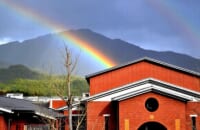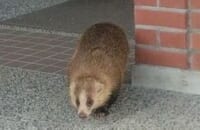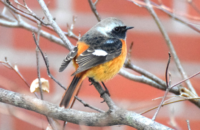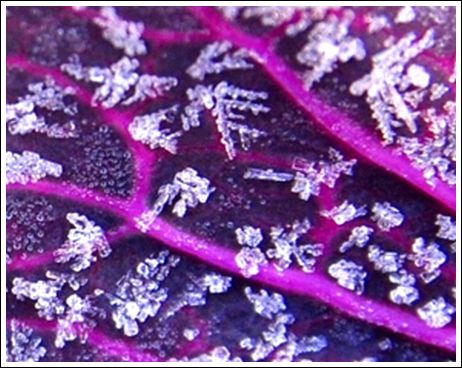
手がしびれるほどに冷えたある日の朝、理科野外MSで生育している葉のキャンバスでは、自然の見事な芸術作品を鑑賞することができました。
「水」(H₂O)という物質は、私たちの体重の6~7割を占め、身の回りでも普通に観察できるありふれた物質です。でも、その水が自ら表現する形状は神秘的です。「雪は天から送られた手紙」(中谷宇吉郎)で有名な”雪の結晶”の形も実に多彩で美しいものです。
“固体が液体に浮かぶ”という特徴も極めて稀で、ほとんどの物質の固体は液体中では沈みます。そんな物質で私たちは生かされています。
 さて、写真上は「霜の結晶」と呼ばれるものです。樹枝状のものや角ばったものなど1枚の葉の上でも多彩です。他にも針状のものが葉の輪郭や全面を覆ったり、一度溶けた霜が再度氷結した(?)雫状のものなど、0度まで冷えた朝の葉の上は、水が微妙な条件で表現する多彩な展覧会場になるのです。
さて、写真上は「霜の結晶」と呼ばれるものです。樹枝状のものや角ばったものなど1枚の葉の上でも多彩です。他にも針状のものが葉の輪郭や全面を覆ったり、一度溶けた霜が再度氷結した(?)雫状のものなど、0度まで冷えた朝の葉の上は、水が微妙な条件で表現する多彩な展覧会場になるのです。
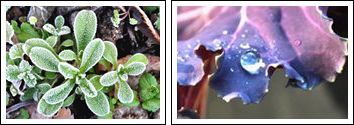
寒い朝は私も苦手ですが、みなさんも少し勇気をもって、自然が創り出す造形物の「無料展覧会場」を訪れてみましょう!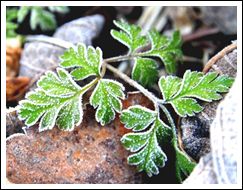
One very cold morning, when I went to check on the cabbages in the Science Department’s outdoor media space, I was able to see a natural work of art.
“Water”(H₂O) makes up 60~70% of our bodies and there is a plentiful supply of it around us. The ways in which water expresses itself is mysterious. Ukichirou Nakaya wrote in the essay “Snow is a Letter from Heaven” about how the shapes of snowflakes are such various and beautiful things.
A solid that has the ability to float on its own liquid is very rare, as most solids sink within liquids, yet we live with such a liquid.
In the photos you can see frost in various shapes and forms on the leaves. Some of them are in needlelike forms, some are droplets of water that have melted once, but then frozen again. These frosts form on the leaves when the temperature falls below 0℃ in the morning, expressing themselves in a variety of ways as if they are part of an exhibition.
I don’t like going out on a cold morning, but let’s be brave and go out to visit this “free exhibitions” produced by nature.
